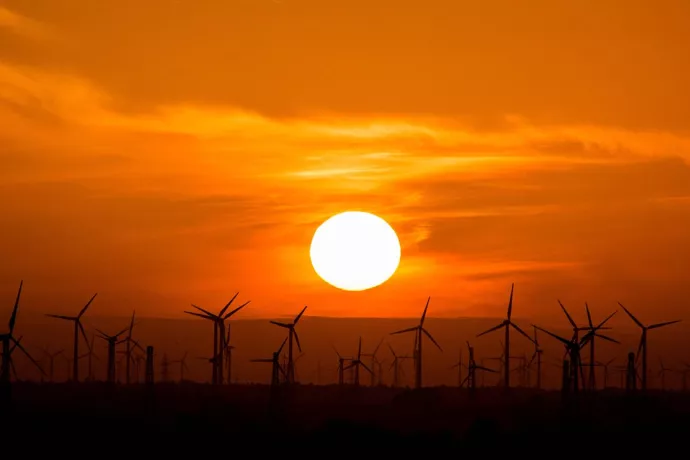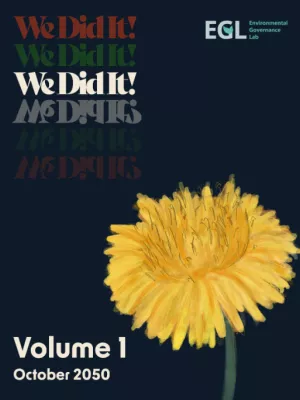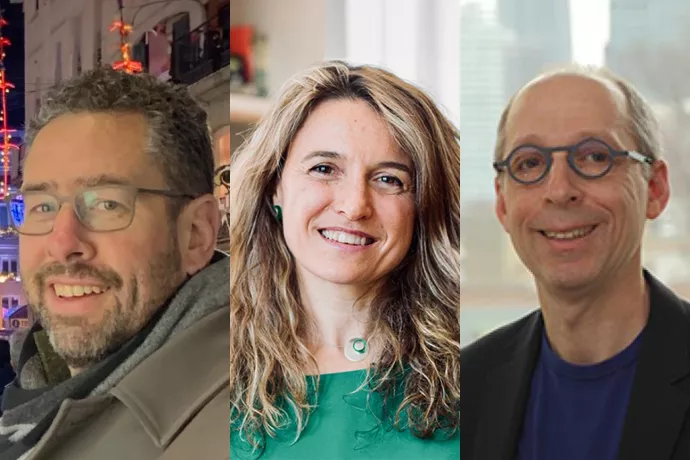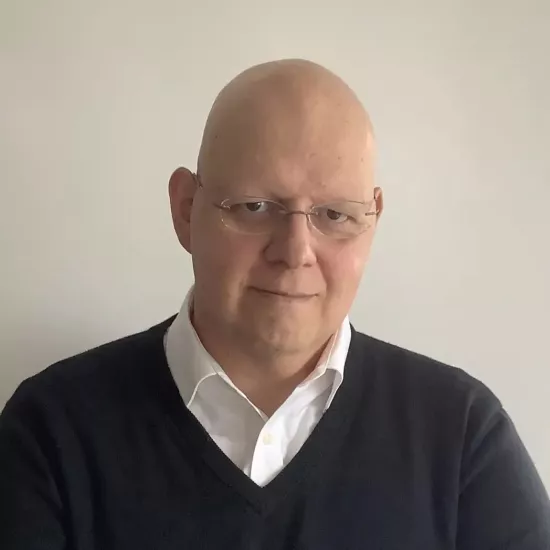New magazine uses fiction to tell the truth about climate change

As climate change takes a relentless toll, it’s worth wondering what Canada will look like in 2050.
In a best-case scenario, the country will have achieved its goal of net zero CO₂ emissions. Thanks to a series of intelligent public policy choices and a collective willingness to change, our country’s transition to renewable energy will be both just and smooth.
But in the worst-case scenario, that goal won’t be met. Earth’s temperature will rise precipitously; food and water shortages, species extinction, climate change refugees and widespread flooding will rule the day.
And then there is an in-between scenario, which is likely the most realistic. This involves achieving net zero — but via a series of experiments, compromises and unforeseen events that will make for a bumpy ride.

Published in an imagined Canada of 2050, We Did It!?, a new publication from the Environmental Governance Lab (EGL), looks at that in-between world. It features stories, poems, interviews and even advertisements that explore aspects of life in a net zero world and the work still left to be done to create a fair and equitable low-carbon society. To show us reality, however, the editors at the EGL use speculative fiction.
“The magazine is taking place in the future, and is informed by all the social, political and technological processes that were required to get there,” says Steven Bernstein, a distinguished professor of global environmental and sustainability governance at U of T Mississauga and the co-director of the EGL. “It shows that this will not be a straightforward process, and that even if our climate goals are met, they won’t necessarily be met in a way that we envisage now.”
Bernstein is a co-editor along with EGL co-directors Matthew Hoffman and Teresa Kramarz.
In this forecast version of 2050, many things have happened. There’s been an 80 per cent reduction in emissions following public forays into biofuels and carbon capture. Supply chain disruptions from wars, floods and heatwaves have led to periods of rampant inflation. Canada is less meat-dependent and less focused on consumption, with a circular economy centred on the reuse of existing materials.
Those ‘interviewed’ in the magazine include a renewable energy engineer whose Albertan parents worked in the oil industry until it collapsed; a “clifugee” (climate change refugee) who fled deadly heatwaves in South Asia to become a farmer and leader of a wind co-op in Ontario; and the owners of a Toronto bakery who’ve maintained their business despite difficulties presented by energy price hikes and multiple building retrofits.
This is a world in which homes are insulated with mushrooms, the slang word “fossauto” denotes an uncool gas-operated vehicle, and rail travel has been greatly modernized in a largely successful bid to replace cars.
“Going between dystopia and utopia was definitely a goal from the outset,” says Hoffmann, a professor of political science at U of T Scarborough. “We want readers to be able to see themselves in these pathways to 2050. That means telling stories about political and personal struggles, while also telling stories about things going well.”

One decidedly dystopian story is ‘Thirsty,’ written by Kramarz, an assistant professor at the School of the Environment. The story depicts a lithium mine in the Argentinian desert that has displaced an Indigenous community, leaving its people fighting for water, food and electricity. The story reminds us that while lithium is a renewable energy source, its extraction can produce many of the same harms associated with other forms of mining.
“In ‘Thirsty,’ I’m trying to call attention to the question of a just transition,” says Kramarz. “There’s no doubt we need to decarbonize, but it worries me that in doing that we aren’t paying enough attention to people and places.”
We Did It!? conveys public policy information in a clear and readable way, showing how major climate decisions affect ordinary people and, in turn, how ordinary people can play their part as consumers and voters in shaping those decisions.
“With this publication, we want to contribute to the public conversation around what’s going to have to happen in the next 25 years,” says Hoffmann. “It’s not that there’s too little talk about the climate, but I’d say we’re not talking and thinking about the right things. We need to have a more expansive dialogue about what we want our society to be, and what large-scale choices we want to be making.
“We hope that storytelling like this is a good way to do that.”
We Did It!? was crafted through an intensive workshop process, supported by the Alan Dean Family Symposium on Environmental Governance, where energy transition experts were brought in to provide writers with the accurate technical information needed to develop and write their stories. The EGL plans to work on more issues with the continued support of the Dean Family Symposium.



